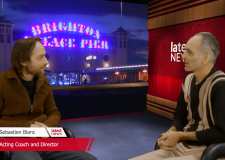Keep moving
Zara Baker looks into the hows and whys of arthritis and finds ways to ease the pain

Pain in the neck? And I don’t mean your over-excited kids eagerly anticipating 25 December. Arthritis is a pain that worsens in the winter, and if you have it, it can hinder your day to day life and activities. It’s an inflammation of the joints (hands, arms, feet, knees etc) and a condition that affects 10 million people in the UK. Contrary to popular belief, it’s not something that just occurs as we get older too: 12,000 children under the age of six have arthritis in the UK, so it’s not just a sign of getting old.
In children the most common form of arthritis is ‘oligoarticular JIA’ (no, we’re not sure where the name comes from either!) but this form of arthritis, which particularly affects the knees and ankles, is commonly linked with eye problems too.
In adults, osteoarthritis is the most common, affecting the knees and hips in the majority of cases. Mild inflammation around the joints and damage to cartilage are all symptoms. This form of arthritis generally affects those aged over 50.
Why is arthritis worse in the winter?
Imagine how your body tenses up when you are cold and how the muscles contract when you do this.?If you suffer from arthritis this can intensify the pain, making the condition worse. People with advanced osteoarthritis are probably most likely suffer from the cold.
In the winter months, we also drink less – who wants to guzzle down water when it’s 10 degrees outside? But arthritis can worsen with dehydration. The science bit? Cartilage is made up of 70–80 per cent water. When there is not sufficient water in the cartilage, it deteriorates. Bone rubs bone and this equals pain.

Physiotherapy for arthritis
There is no cure for arthritis but the condition can be managed. An important factor is to keep joints mobile, which is where physiotherapy comes in. Physio can help improve your mobility, strength and flexibility. Used along with medication – like the supplement Chrondroitin – physio can also help to minimise pain. It is usual to have around six sessions with a physiotherapist. Speak to your GP for further advice.
Physiotherapists have a detailed understanding of the body and movement. They can provide advice and guided exercises so arthritis doesn’t interfere with your day to day life. Remember, it’s not a pain you just have to ‘put up with’. Although it can’t be cured, it can be helped.
Physiotherapy involves:
• Exercise
• Posture
• Hydrotherapy
• Massage
• Pain relief techniques, such as electrotherapy
Arthritis Foundation: www.arthritis.org




















